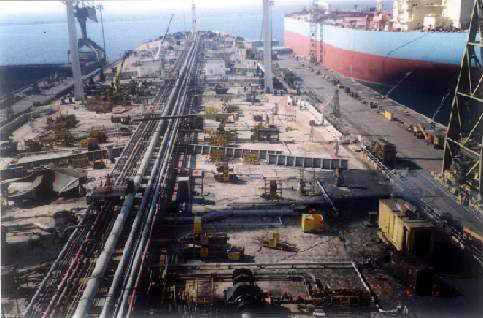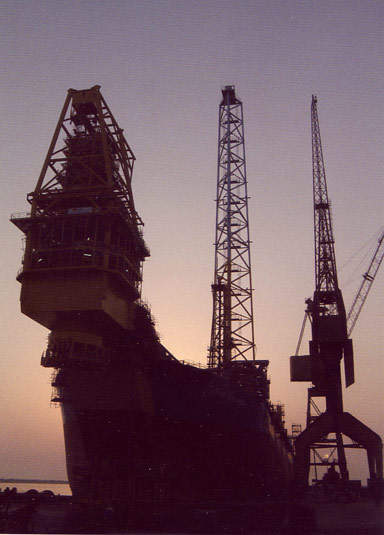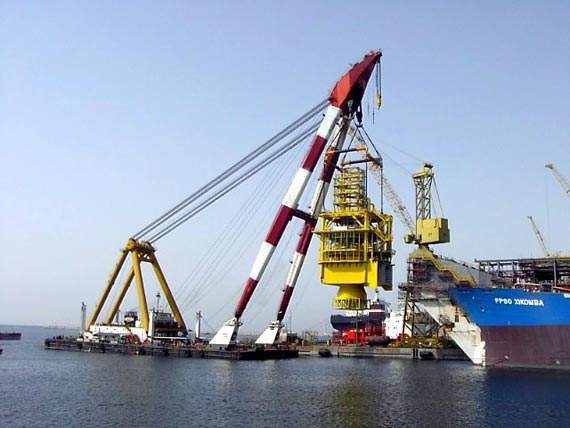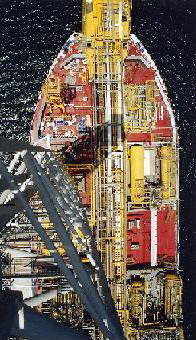ExxonMobil’s Xikomba deepwater development in Angola, West Africa, is located in the north-west corner of Block 15, approximately 230 miles (370km) north-west of Luanda in water depths of up to 4,850ft (1,480m). The field was discovered in 1999. Recoverable reserves have been put at around 100 million barrels of oil equivalent.
Xikomba’s development is divided into two parts – Xikomba A and B. First oil from Xikomba A was achieved in 2004, with a production plateau of around 80,000 barrels a day. First oil from Xikomba B was achieved in 2005.
In addition to Esso (operator, 40%), other participants in Block 15 are BP Exploration (Angola) (26.67%), Agip Angola Exploration (20%) and Statoil Angola (13.33%). Sonangol is the concessionaire.
Xikomba is a light, low-sulphur crude. Crude characteristics are:
- API: 34.7°
- SG: 0.8514
- Sulphur: 0.39mass%
- Pour point: 3°C
- TAN: 0.16mg KOH/g
- Nickel: 12.0wppm
- Vanadium: 5.0wppm
- Viscosity (50°C): 4.71cSt
In May 2011, ExxonMobil announced that production at the field will cease, as the reserves have depleted. A peak production of 90,000 barrels a day has been achieved at the field. Exxon is currently in the process of decommissioning the field.
Construction and development of the West African oil field
Xikomba has been developed by subsea wells tied back to a combined floating production and storage ship. FPSO Xikomba has deadweight of 257,000dwt and a storage capacity of 1,700bbl. The FPSO is owned by Sonasing, a joint venture between SBM and Sonangol. It is based on the conversion of the former VLCC tanker Mosocean.
The oil is stored in twelve crude oil tanks, although the vessel also has two slop tanks for the cleaned produced water, as well as three water ballast tanks. Crude is transferred every three to four days to a shuttle tanker approaching the FPSO from the stern, where the two vessels are connected by floating hose.
FPSO Xikomba’s accommodation facilities can house 85 people in one and two bed cabins. The facilities also contain the central control and radio rooms.
With the end of operations at the field, FPSO Xikomba is planned to be upgraded and relocated to Eni’s block 15/06.
Nine-well subsea development at Angola’s Xikomba field
Xikomba is a nine-well subsea development – four production wells, four water injection wells and a gas injection well. The subsea facilities are connected to the surface by two 10in production risers. There are also two 8in water injection risers, an 8in gas injection riser and three umbilicals.
These enter the FPSO at the swivel stack in the bow. The swivel stack consists of a 6in gas injection, HP utility, electric, LP utility, 6in pigging and 10in water injection swivels. There are also two 12-production lines and two 12in test lines.
In total, the processing facilities have a capacity of 20 million ft³/d, a water injection capacity of 90bbl/d and a gas injection capacity of 95 million ft³/d.
Topside processing modules linked to ExxonMobil’s deepwater oil development
The topsides consist of 16 main modules varying in weight from 170t to 1,100t, all of which were fabricated in the UAE. These include the HP separator (module 1) and the low pressure and electrostatic treater (module 2).
Module 4 is the gas injection / gas lift facilities and the gas is dehydrated in module 6. The water is treated in module 9 and then pumped out at high pressure by two dual fuel turbine driven water pumps on module 10, before being routed through the swivel path to the water injection wells.
Module 11 has the heating cooling and electricity services. The heating uses steam from the vessel’s boilers. Cooling is by seawater.
Other services are the chemical storage (module 14), flare scrubbers (module 16) and methanol storage and pumping equipment (module 19). Module 4 contains the test separator.






